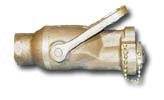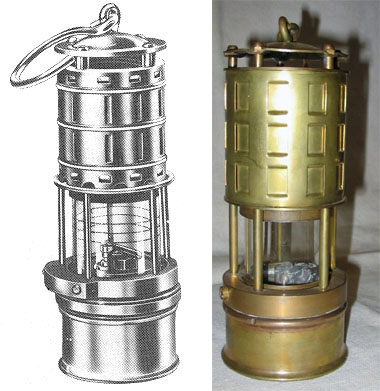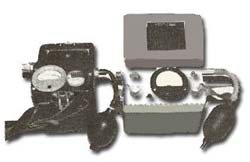 |
 |
 |
 |
| HOME |
| ABOUT US |
| PARTICIPATE |
| COLLECTIONS |
| DC EQUIPMENT MUSEUM |
| SHIP&SUBMARINE MUSEUM |
| WW II DAMAMGE REPORTS |
| SHIPBOARD CASUALTIES |
| DAMAGE CONTROL MUSEUM |
| DC EQUIPMENT Museum |
| Gas Free Equipment |
| Combustible Gas Indicator (Explosive Meter) |
| Combustible gases were tested for using the Navy type “E”
combustible gas indicator (CGI). The Model 40 CGI was designed
to test for MAF vapors (rocket fuels). They were designed for
the detection of miscellaneous flammable gases and vapors,
including hydrogen and leaded gasoline. They could be used to
test a tank, void or compartment for flammable gases and vapors. The combustible gases test sample method of operation was done by lowering the flexible tube line, connected to a CGI, into the space; the same procedure was done using the Model 40. The aspirator bulb was then squeezed the required number of times for the test. The number of squeezes required to operate a particular CGI was usually found in the instructions printed inside the instrument’s lid; if there was any doubt, testers continued to squeeze the bulb until the highest reading was obtained. The result was shown almost immediately on the dial, with the level indicating the range in the lower explosive limit (LEL) of the reading. Proper operation of the unit was very important, for the safety of the crew depended on its correct use and interpretation. Onboard calibration test kits were provided for most of these instruments, or they could be taken to a repair ship or shore-based lab for calibration. Before operation, the unit was checked and validated for the periodicity. Combustible gases had to be less than 10% of the LEL, and toxic gases had to be below their threshold limit value (TLV), before the space was certified safe for personnel without breathing apparatus. Samples were taken in the center of the compartment and in all four corners. This procedure was repeated on all levels of multi-level spaces. Readings over 10% of the lower explosive limit were potentially dangerous, requiring the compartment to be further ventilated until all readings were below 10% of the LEL |
 |
| For more information, see the Index. |